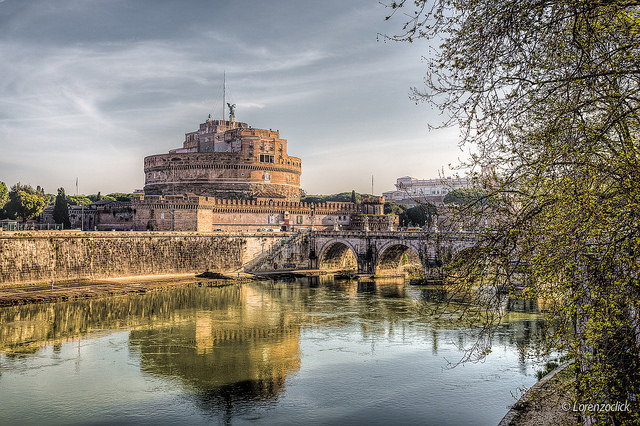 Just as I often hear it said that there are many Romes to discover (depending on the individual person who walking it, visiting its many time-hallowed sites and asking The City his or her own questions) there is always a brand new R.A.P. Semester; receiving not only a fresh group of eager artists but even some of the same teachers as they explore ever new methods for making Rome speak to each of their art students in a highly personable and meaningful way.This winter finds me more than ever exploring (through a series of oil canvases and one major tempera wall mural or tromp l’oeil) the relationship between good painting and drawing.
Just as I often hear it said that there are many Romes to discover (depending on the individual person who walking it, visiting its many time-hallowed sites and asking The City his or her own questions) there is always a brand new R.A.P. Semester; receiving not only a fresh group of eager artists but even some of the same teachers as they explore ever new methods for making Rome speak to each of their art students in a highly personable and meaningful way.This winter finds me more than ever exploring (through a series of oil canvases and one major tempera wall mural or tromp l’oeil) the relationship between good painting and drawing.
With this in mind, my Summer 2016 lessons in plein air drawing will be aimed at mediating this connection by introducing students to some of the underlying assumptions about Space, Form and Light found recurrent in this City in a sort of all-pervasive vocabulary and alphabet about the cardinal points (North/East/South/West /Top/Bottom). Assumptions about designing based on symmetry and the grid and the myths and narratives that have produced the urban history of places as different as the Colosseum; the fresco paintings of Michelangelo; or the ruins of The Broken Bridge on the Tiber River.
To me, all of this is a little bit like Leonardo Da Vinci’s unified theory of everything and although it all sound very high-blown and philosophical. This year I mean to stress how so much of this goes back to the way we hold our pencil or twirl it in our hands as we draw a line or to the little muscle we discover inside our vision to help us focus better our drawings – and ultimately our paintings!
I suppose that living in Rome now for seven years or seasons has seasoned me to present it in such a way in 2016. Many of these insights go back to my seven years of everyday activities and interaction with Romans, as much as they do to lesson preparations or talking shop with other artists. This interaction with Romans has definitely included more than riding a crowded bus or asking directions from a local with a very strong, ethnic romanaccio accent. In my case it has meant delving deeper into the history books about the piazzas and monuments of memory that are everywhere in Rome.
In other words I am always reading more; trying to see deeper into things that I thought I knew or had understood from a previous reading and this carries over into my attitude toward my subject when I sit down to sketch or design it into a larger composition of lines and colors.
The old adage that Rome wasn’t built in a day, should also read: wasn’t drawn in a day! I smile now when I look back on how much I thought I got Rome when I first came to live here; not realizing how many layers or spaces one must travel before arriving at the more inner cores. With this ex-pat sense of The City as a world with deep, deep recesses that lie much further back than its first-hand postcard scenarios, I set about 2016 emphasizing to young artists that they must shed their pride and become like a child in order to go back home with some sense of discovery – and of an artistic Aha! feeling.
José Grave de Peralta, Drawing Instuctor
Summer 2016 will mark the 5th year José has been engaged as Drawing Instructor for Rome Art Program
Image: Courtesy of Lorenzoclick via Flickr